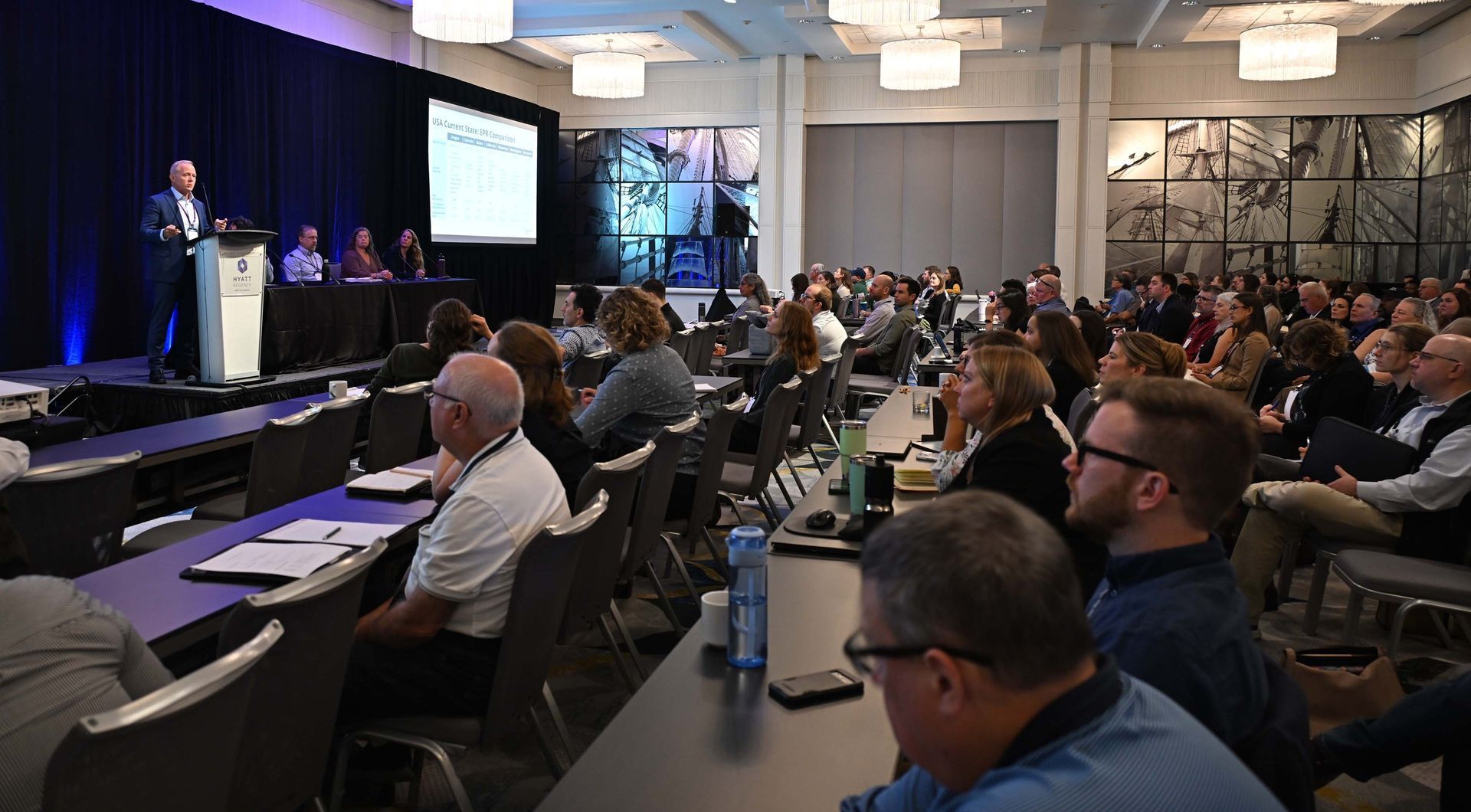Theory Meets Reality: Packaging EPR Goes Live July 1
Recycling coordinators know that some people and locations are stubbornly indifferent to recycling. COVID has ruptured civic values and behavior. Creating a recycling culture is harder than ever. Producers know how to sell their products. Now they need to learn how to sell recycling.
On July 1, Oregon’s packaging and paper extended producer responsibility (EPR) program begins operating. This will be a first in our country. “Producers”, instead of local governments or private citizens, will be paying to recycle packages and paper products. Colorado’s program begins operating early in 2026. For years we have heard the theory of how packaging EPR will work. At last, we will get results.
Five other states also have laws. Their programs should all be operating by 2030. None of the state laws have identical requirements. The Circular Action Alliance, the “producer responsibility organization” responsible for managing the program in most of those states, knows it has a lot on its plate.
EPR laws are not new to the U.S. Thirty-two states already have laws that cover a wide variety of products such as electronics, paint, mattresses, batteries, etc. Those laws are relatively simple. Most cover one product. The producer group is a small number of companies. Goals and programs are focused and narrow. They are a mixed bag of success and failure.
Packaging EPR is far more complex. The number of covered products is way higher. Thousands of companies are paying for these programs. Goals are challenging. Some are impossible to meet. In addition, local governments treat recycling as a normal service. Their residents will still call them if their recyclables aren’t picked up.
It probably hasn’t helped that advocates tout EPR as the solution for recycling’s problems. We are told we will have more collection and better processing with higher recycling rates. Markets will improve and even stabilize. Some of this will happen, but not all.
Collection and processing should go smoothly in Oregon. The state has high expectations for recycling. I have no doubt recycling will increase. Collection programs will blanket the state, giving more households the opportunity to recycle.
I’m not sure, though, how much of an increase we will see. Recycling coordinators know that some people and locations are stubbornly indifferent to recycling. COVID has ruptured civic values and behavior. Creating a recycling culture is harder than ever. Producers know how to sell their products. Now they need to learn how to sell recycling.
Another challenge is the “responsible end market” requirements. You’ve probably seen pictures of overseas dumps created by unscrupulous or just naïve plastics “recyclers”. In response, Oregon and the other states are requiring sellers and end markets to prove they are “responsible”. They must provide information about who and where they are, how they operate, how much was actually recycled, and more.
Recycling end markets pushed back. Paper and metals recyclers argue they shouldn’t be covered. They don’t cause those problems. As for plastics, the general manager of one of America’s largest plastics recycling companies said his company now spends time and money gathering data and filling out forms to prove they’re “responsible”. His virgin resin competitors don’t have to.
Ironically, we now import more plastics for recycling than we export. Maybe those countries should impose similar requirements on their plastics recyclers.
Colorado faces unique problems. The mountain state is large. Its population is concentrated on the I-25 corridor running north and south through Denver with low population density elsewhere. Recycling collection and processing is limited as are end markets. To make matters worse, slightly more than half of its households use “subscription” services for waste and recycling collection. Those services are funded by the households, not by taxpayers. EPR doesn’t have this experience in other countries. Colorado gets to blaze this trail. The second state to go live poses substantive challenges for producers.
The good news for both states? Local governments that pay for recycling collection and processing will see most of those costs go away. Consumers are unlikely to see prices rise, for now. National companies will simply spread their costs among all 50 states. Local and regional producers, unfortunately, don’t have that advantage.
As for improved markets, remember that recyclables are and always will be commodities subject to the ups and downs of the economy. I don’t see substantive changes in recycling markets unless the producer group’s members try to manipulate markets to their own advantage.
2025 saw new laws and changes to existing laws. Maryland and Washington became the sixth and seventh packaging EPR states. At the same time, California is rewriting its regulations and Maine significantly revised its law. Some of these changes narrowed EPR’s scope to the dismay of advocates.
I’m a member of Maryland’s EPR Advisory Council. We’ve been meeting for a year, discussing the Needs Assessment and now our new law. We have our own unique set of challenges. We also have a big advantage. We can learn from Oregon’s and Colorado’s experiences. Tune in next year to learn how we are progressing.
Share Post





